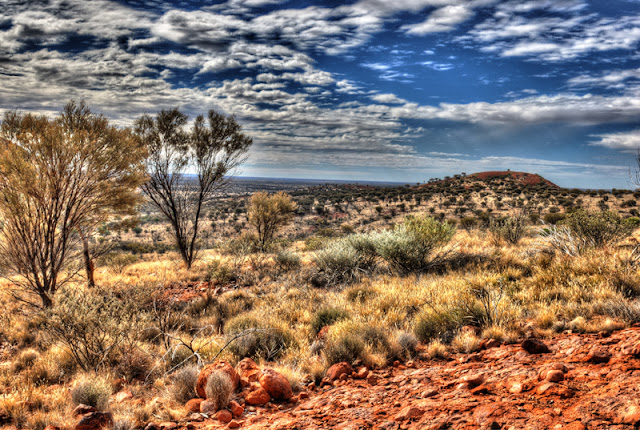We left Broken Hill early for Coober Pedy with a long drive ahead we started early. In fact this section would require approximately 9.5 h of road travel! No time for a lunch stop on this part of the journey.
When we hoped into the car, the temperature was 3.0 degrees Celsius. There was ice on the roof of the car. Rugged up we departed.
 |
| Ice on the roof as we departed Broken Hill |
As we drove away from Broken Hill the desert was covered in fog and there was an amazing hue in the sky. I couldn't resist and had to take a shot. The cold was terrible as I took the shot, road trains and cars that passed by and directed horrible penetrating cold burst of air towards you. But it was worth it as you can see.
 |
| A foggy desert morning. |
With a border to cross and many kilometers; we drove and ate as we cruised to Coober Pedy. About 1.5 hours away from Broken Hill we reached the border between New South Wales (NSW) and South Australia (SA).
 |
| Sign outside the border cafe to mark the border. |
The total length for this part of the journey was 970 kms, which is just beyond the range of the diesel Golf Wagen. The car was averaging between 5.7-6.1 L/100 kms (965-902 km per tank). We could have made it on the one tank but it was not worth the risk as the Stuart Highway only had mobile phone coverage at Coober Pedy and Port Augusta. We refueled at a small place called Glendambo.
Diesel was $1.73 per litre at Glendambo, at the time Sydney prices were averaging about $1.51!
 |
| That is right only 30 humans on Glendambo |
 |
| On the drive along the Stuart Highway there were many lookout points. This one is of a dried up lake with its salt bed exposed |
We reached Coober Pedy just before sun down.
 |
| In the background are the opal mines. There were piles and piles of dirt around the mining areas |
 |
| Welcome to Coober Pedy. The mining vehicle marks the entry to Coober Pedy |
In Coober Pedy there are about 3000 people. Two thirds of the population live in what's called 'dug outs' which are underground, the rest lived above ground. They build their homes into the hillside like hobbits but without the green luscious fields. Coober Pedy was quite the opposite, it was arid, bare, flat and very dusty. We stayed in the Desert Cave Hotel and had a dug out room.
There was no sound between us and the neighbours. When the lights were off, you saw nothing! The temperature was constant but it smelt like chloride throughout the enclosure. There was an air hole which fanned fresh air into the rooms. Needless to say we had a very good sleep that night.
Some advice if you are claustrophobic, don't stay in a dug out.
We checked out the catacomb church which was a dug out church the night before departing Coober Pedy. Pretty neat place!
 |
| Indeed he does having made it this far |
 |
| Inside the Catacomb church at Coober Pedy |
Next day we start the trip to the rock!

















































